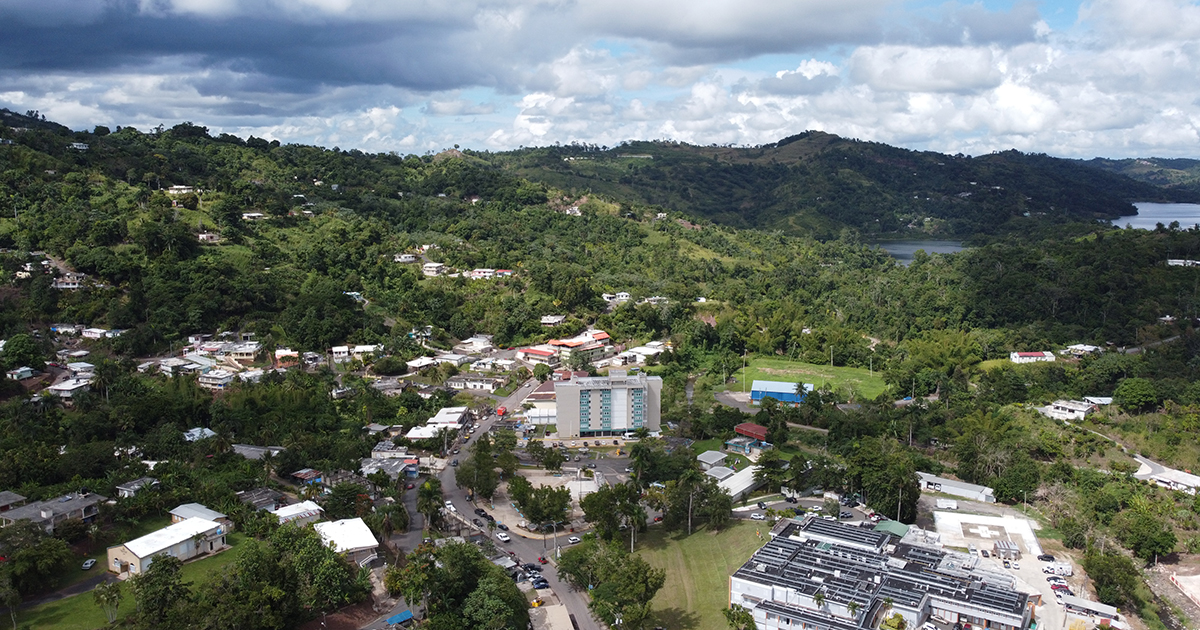
Slipstream, IREC to develop energy resilience plan in Castañer, Puerto Rico
FOR IMMEDIATE RELEASE
MADISON, WI – The U.S. Department of Energy Solar Energy Technologies Office (SETO) has selected Slipstream Group, Inc. to lead a team that includes the Interstate Renewable Energy Council (IREC), Luma Energy (LUMA), La Cooperativa Hidroeléctrica de la Montaña, ACE IoT Solutions, and Texas A&M University to jointly receive a $1.4 million award. The firms will coordinate to develop an innovative, community-based, energy resilience plan for the Cordillera Central community of Castañer, Puerto Rico to assist the local utility in developing tools to restore power faster after extreme weather events.
The award is part of the Renewables Advancing Community Energy Resilience (RACER) funding program, an effort to increase the resilience of energy systems to help communities withstand and recover rapidly from disasters. The three-year project builds on an existing multi-property microgrid at Castañer developed by IREC and La Cooperativa Hidroeléctrica de Montaña. The local electric cooperative owns and operates the microgrid, which uses distributed energy resources (DER) including solar energy and battery storage.
IREC will lead the initial stages of the project, in which its program staff will identify and engage community stakeholders in a collaborative planning process to define the energy vulnerabilities and community resources. Through this process, the community itself will determine what systems, outcomes, and resources the project should prioritize.
"When the power goes out in Puerto Rico, it can last for days, weeks, and months—as we saw during Hurricane Maria in 2017 and Hurricane Fiona this year," said Carlos Alberto Velázquez Lopez, Program Director at IREC. "By using an inclusive planning approach, the community will define for itself what resiliency means so that the people of Castañer can maintain the energy services that are the most essential to them; this model of engagement can also be replicated in other communities to define locally-tailored resilience plans."
Following the planning process, Slipstream's research team and its partners will design, test, and deploy an automated sensing and control system that coordinates and maximizes the solar PV system and microgrid to improve community energy resilience. The innovative sensing and control system is based on the VOLTTRON open-source software platform, which uses internet-of-things and cloud technologies to enable devices to share grid status information between the community and the utility.
"We will conduct research and development in lab settings to create a lab-scale sensing and control system and test an automation strategy for behind-the-meter DER coordination and optimization," said Dr. Xiaohui "Joe" Zhou, Director of Research and Innovation at Slipstream and the Principal Investigator on the project. "This strategy will allow us to meet the priorities that emerge from the community resilience plan."
When finished, the project will prove that DERs can be coordinated and optimized for improved community energy resilience in the face of natural disasters or other unexpected events. The successful demonstration of these technologies will provide Puerto Rico’s electric utility, LUMA, with another tool for power restoration planning. The long-term hope is that this microgrid project will be the first of many across the island that can be leveraged by LUMA to restore power more quickly after outages.
"We know that access to reliable and affordable electricity is an issue of foremost concern in Puerto Rico," said Larry Sherwood, President and CEO of IREC. "At IREC, we are excited to join Slipstream and other partners to help a community use these innovative technologies to become more resilient during future interruptions to the power grid."
Slipstream's contributions will build on the organization's nationally recognized work with grid-interactive efficient buildings.
"We can't afford to only apply these advanced technologies to large buildings in wealthy cities," said Sandra Henry, President of Slipstream. "Our work with IREC on this project will demonstrate that high-tech climate solutions can and should be used to increase resilience for communities of all sizes and means."
Media Contacts
Slipstream: Zack Mast
Digital Content Strategist
zmast@slipstreaminc.org
608.210.7180
IREC: Avery Palmer
Communications Project Director
apalmer@irecusa.org
202.302.2765
About the Organizations
About IREC: The Interstate Renewable Energy Council (IREC) builds the foundation for rapid adoption of clean energy and energy efficiency to benefit people, the economy, and our planet. Its vision is a 100% clean energy future that is reliable, resilient, and equitable. IREC develops and advances the regulatory reforms, technical standards, and workforce solutions needed to enable the streamlined integration of clean, distributed energy resources. IREC has been trusted for its independent clean energy expertise for 40 years, since its founding in 1982. For more information, visit www.irecusa.org or follow IREC on Twitter, LinkedIn, or Facebook.
About Slipstream: Slipstream creates, tests, delivers and scales the next generation of energy efficiency and renewable energy programs that move us farther, faster toward a clean energy economy. Slipstream partners with utilities, local and state governments, regulatory agencies and other organizations to inspire new solutions to big energy challenges. With 40 years of experience demonstrating "what’s next" in programs and technologies, Slipstream is an established and trusted trailblazer in the industry. For more information, follow Slipstream on Twitter, LinkedIn, Facebook, or Instagram.
About the Solar Energy Technologies Office: The U.S. Department of Energy Solar Energy Technologies Office supports research and development across the solar energy spectrum to drive innovation, lower costs, and support an equitable transition to a decarbonized economy. Learn more at energy.gov/solar-office.